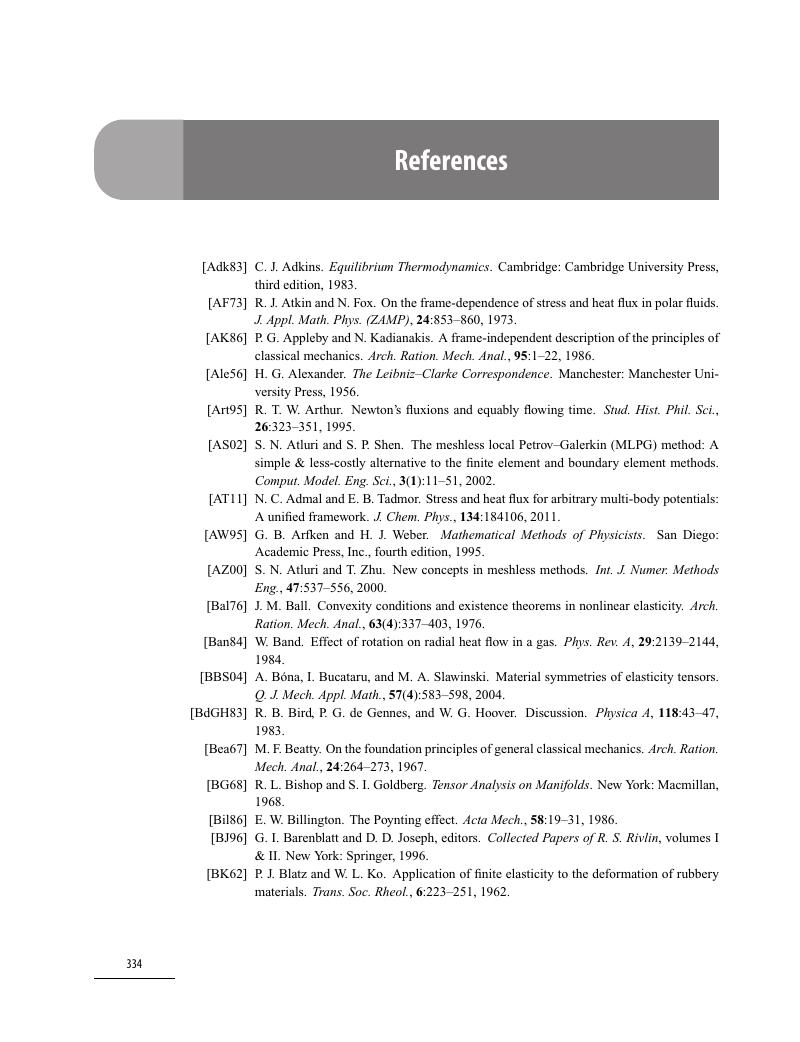References
Published online by Cambridge University Press: 05 February 2012
Summary

- Type
- Chapter
- Information
- Continuum Mechanics and ThermodynamicsFrom Fundamental Concepts to Governing Equations, pp. 334 - 342Publisher: Cambridge University PressPrint publication year: 2011



